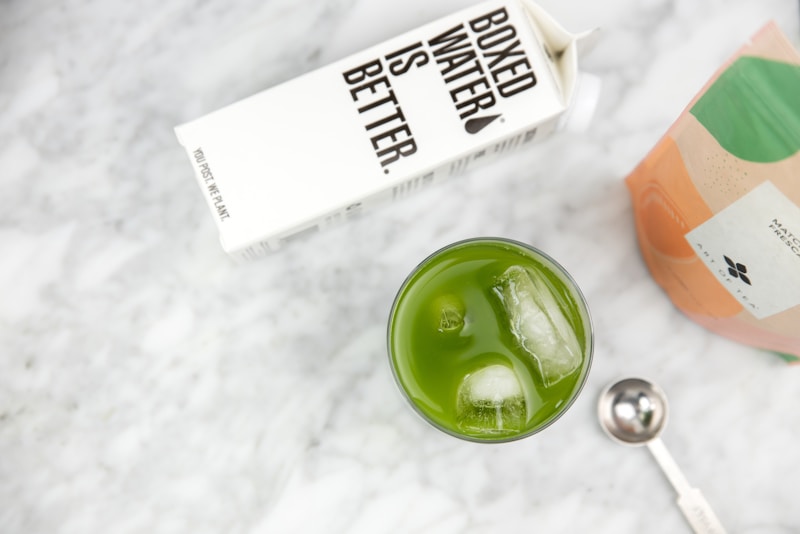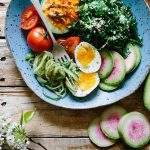Do you ever look back at the end of the month and wonder how you spent so much money on food? Most people do — especially if you’re conscious of eating foods that are good for you!
Today we face many challenges when trying to eat healthy on a budget. Surprisingly, junk food is sold at incredibly low and accessible prices, whereas healthier foods that are better for us are usually far more expensive. Not only has eating junk food become cheaper, it’s also marketed as the sexy thing to do.
So why is eating healthy so expensive, and most importantly, how can we get around it?
First of all: packaging. The industry believes that for you to choose their product they have to prove to you that their product is the healthiest and the best — even if it isn’t. You might find food products with creative labeling and ‘eco-friendly’ packaging that urges you to select it over other more simple or nude options.
Secondly, exotic superfoods that sound and taste great but are simply not from your area. Having off-season imported food within arm’s reach is a result of combustible oils to transport it to you, maintaining the temperature and ideal conditions to keep your superfood ready and eatable and any import taxes that may be applied. Of course, none of these are free, so add those expenses to your superfood.
In the competition between junk food and simpler, cheaper and healthier foods, how do supermarkets make produce more appealing? By processing it so that it’s more attractive and easier to consume. Processed foods include those that are cleaned, cut and ready to eat or serve which increases their price.
Now here is the good part: even though the food industry have made eating healthy more difficult and expensive, let me show you a few tricks that will get you eating healthy within your budget.
1. Plan Ahead!
Research has shown that when you plan your meals and your shopping list, you spend less! By having an idea of what and when you are going to cook it’s easier to select healthier ingredients that can help you achieve delicious and healthy meals. Next time you go to the supermarket try thinking of the snacks and meals that you would like to eat for the coming days and make a list of the ingredients or foods that you would need.
2. Buy Raw, Unprepared Ingredients
Instead of buying that ready-to-eat curry, pizza or burger, try purchasing the ingredients separately. Not only do you get to more food and higher-quality ingredients, but you also get to customise it: adding more of what you want instead of having sky-high amounts of sodium.
Have you ever visited the grains isle in your supermarket? I’m not talking canned, nor those added with sugar or salt. I’m talking about simple, dried grains such as beans, lentils, and chick-peas. These are all legumes and they are an excellent source of vitamins, minerals and fat-free protein. You can add them to salads, blend them into soups or even smash them and put them on top of your favorite type of bread with a touch of cilantro from your window.
When you buy these types of foods in bulk, they can last a long time and save you quite a lot in pocket change. To save time, you can also make large batches and freeze the leftovers. One of my favourite recipes is to cook a big pot of black beans and season them with herbs (from your new window garden or spice drawer), onion, garlic and a sprinkle of salt. Serve warm and topped with avocado, tomato, cilantro, and plain toasted corn. Delicious on a cool autumn day, and so easy to prepare and freeze!
3. Avoid Foods With ‘Healthy’ Additives
Most of these foods have eye-catching packaging that increases the price dramatically, but doesn’t actually offer you as many health benefits as you would think. Many gluten-free items contain extra fat to compensate for the lack of texture. Instead of buying cereal with added, freeze-dried fruit, go for the basic version and add your own extras such as raisins, chia or linseeds, almonds and fresh fruit.
This takes us to the next step:
4. Buy Local And In Season
Getting familiar with what grows naturally in your area can help you save money and support your local economy, but this doesn’t mean you can only eat tomatoes in the fall! It’s beneficial to buy foods in season because they’re at their nutritional peak, but your pocketbook will thank you too. Did you know that frozen or canned fruits and vegetables should actually have more nutrients than fresh produce? This is due to the time of harvest which tends to be when fruits and vegetables are at their nutrient content peak. Therefore, this type of products can represent a nutritious, time and money-saving alternative. On the other hand, when you buy local food travels less to get to your plate. The less it has to travel, the less fuel costs are passed on to the consumer. Less transportation also has the added benefit of fewer CO2 emissions, so when you eat local you are also eating sustainably. Check your local grocery store or even your nearest farm for local products. If you have a green thumb, try your hand at growing your own herbs, fruits and veggies like cilantro or strawberries. Plants like these don’t occupy much space, and they’re happy to grow even on your windowsill.
Do You Have Tip #5?
So, next time you make your grocery list try to think of core, basic ingredients instead of pre-made ready-to-eat meals. Try setting aside one day a week to prepare legumes and soups in advance, take into account local products and don’t fall for seductive packaging on processed foods.
Do you know of other ways to eat healthy and stay on a budget? I’d love to learn about your ideas and recipes of how to eat healthy, delicious with few pennies, please post them below.













